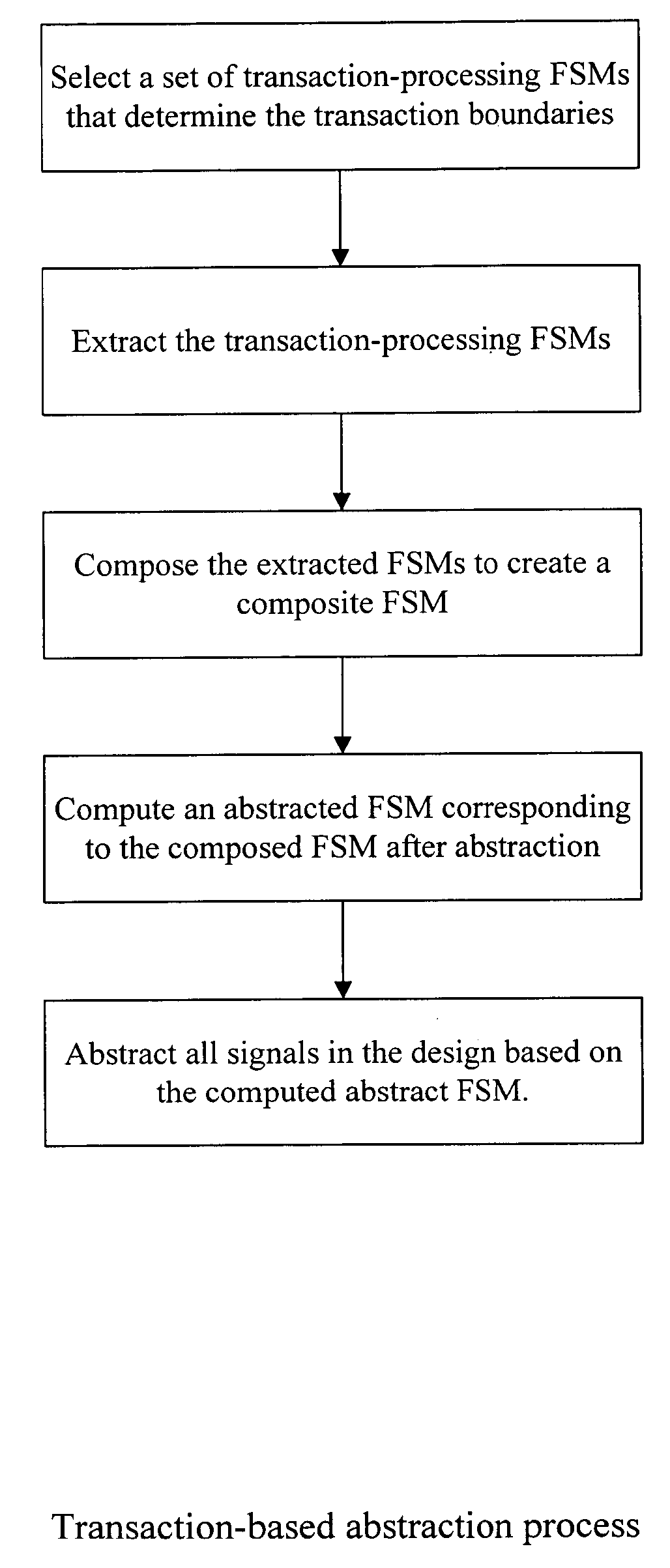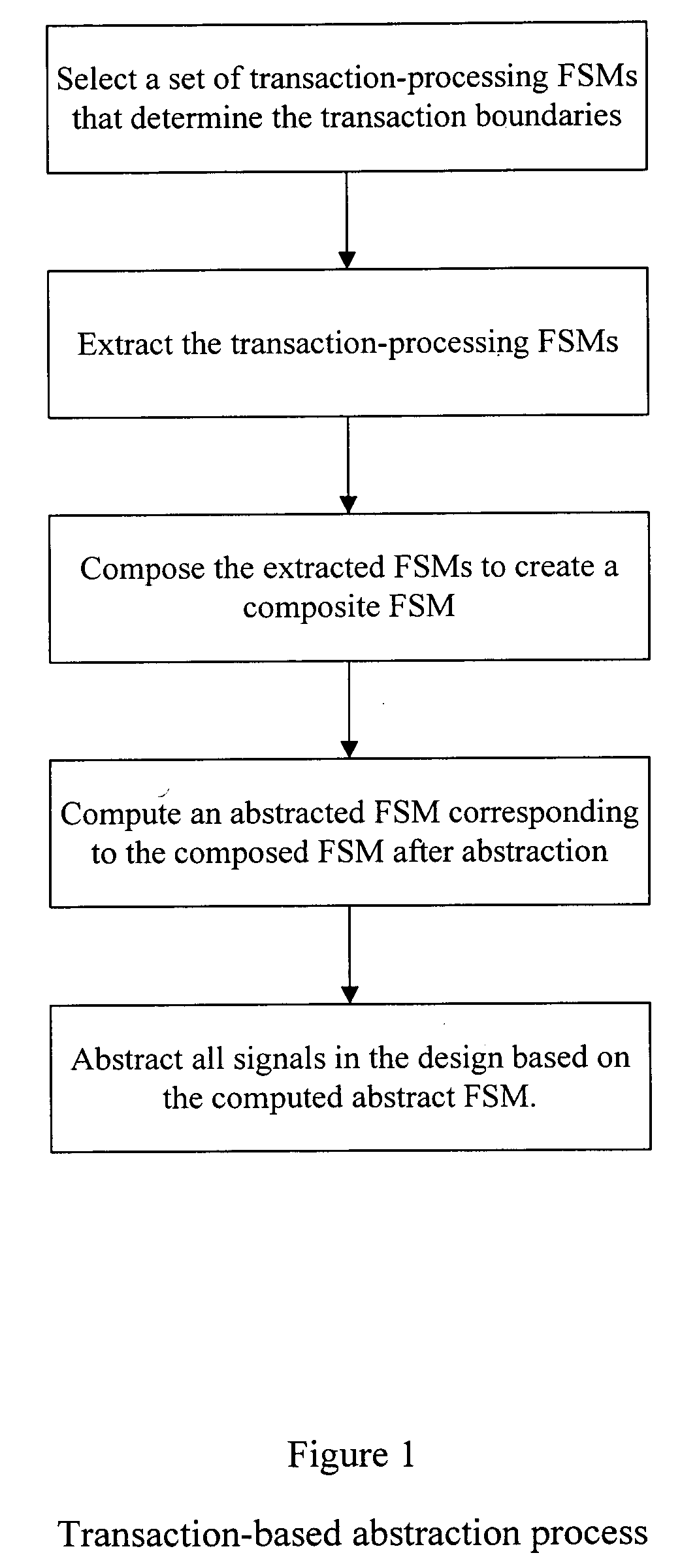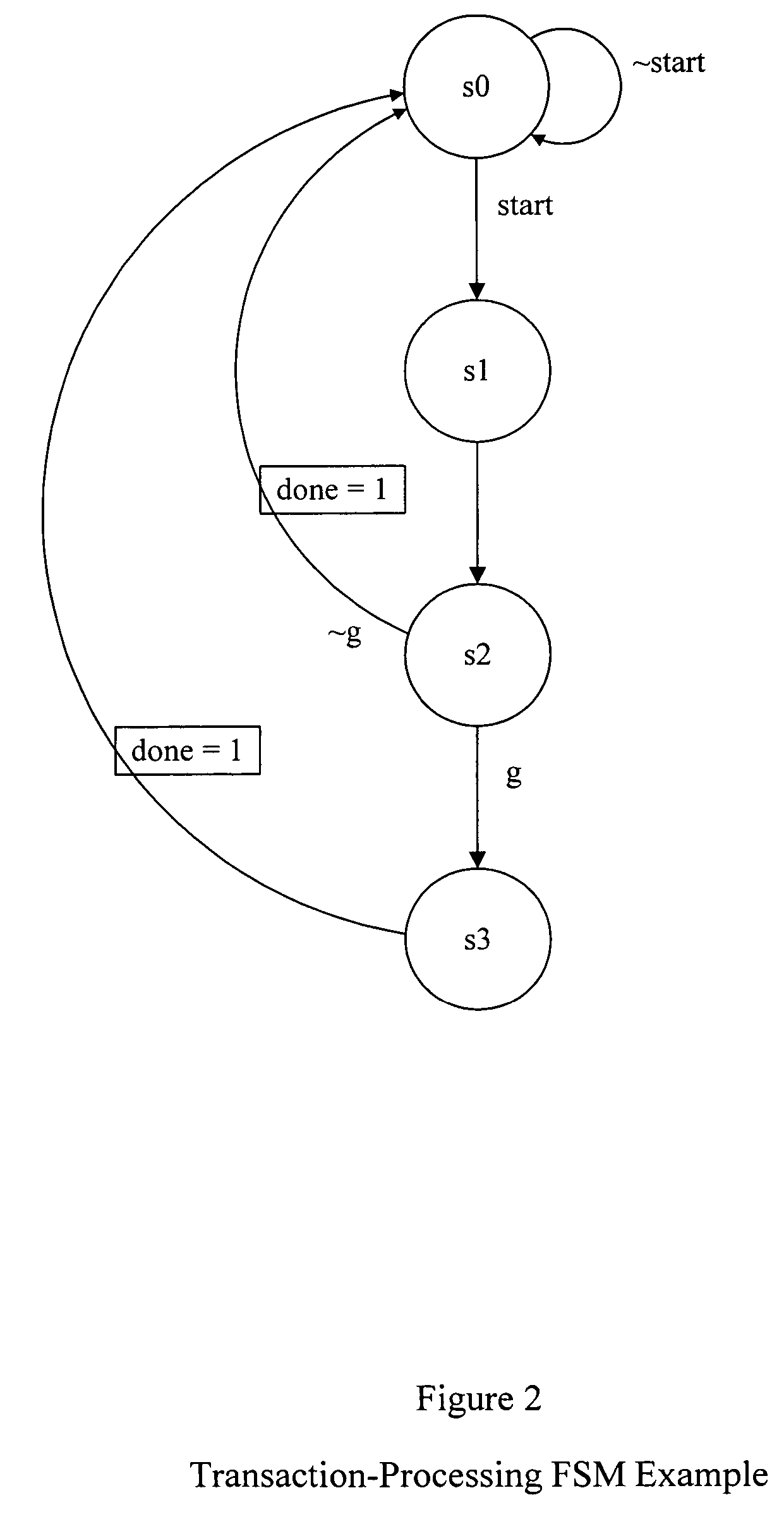Transaction-based system and method for abstraction of hardware designs
a technology of hardware design and transaction, applied in the field of system and method for simulation and verification of electronic hardware design, can solve the problem of reducing the range of data values possible, and achieve the effect of relieving the user from manually performing the task
- Summary
- Abstract
- Description
- Claims
- Application Information
AI Technical Summary
Benefits of technology
Problems solved by technology
Method used
Image
Examples
Embodiment Construction
[0027] The present invention will now be described in detail with reference to the drawings, which are provided as illustrative examples of the invention so as to enable those skilled in the art to practice the invention. The figures and examples below are not meant to limit the scope of the invention.
[0028] In a general sense, transaction-based abstraction is a form of temporal abstraction. In the present invention, hardware is assumed to process transactions, which is defined to mean that the hardware accepts a request, processes the request, and returns a response, and that the hardware can process such requests infinitely often. A simulation of the unabstracted design causes each transaction to start at a first time step and end one or more time steps later. In accordance with the present invention, the design is abstracted such that, a simulation of the device causes every transaction to occur in exactly one abstracted time step.
[0029]FIG. 1 illustrates an overall transaction...
PUM
 Login to View More
Login to View More Abstract
Description
Claims
Application Information
 Login to View More
Login to View More - R&D
- Intellectual Property
- Life Sciences
- Materials
- Tech Scout
- Unparalleled Data Quality
- Higher Quality Content
- 60% Fewer Hallucinations
Browse by: Latest US Patents, China's latest patents, Technical Efficacy Thesaurus, Application Domain, Technology Topic, Popular Technical Reports.
© 2025 PatSnap. All rights reserved.Legal|Privacy policy|Modern Slavery Act Transparency Statement|Sitemap|About US| Contact US: help@patsnap.com



